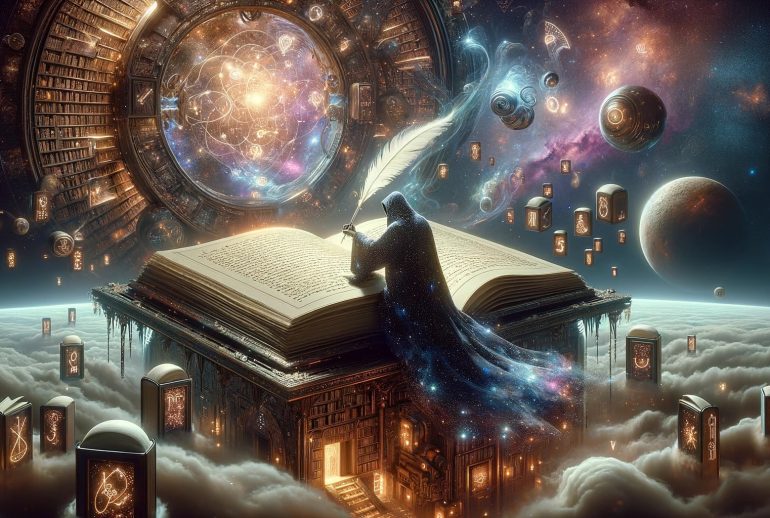n the vast realm of literature, crafting a memorable and thought-provoking conclusion is an art that transcends the boundaries of realism. Authors have the power to create worlds, characters, and narratives that transport readers to fantastical realms, where the improbable becomes possible. Within this creative freedom exists a category of conclusions that stretches the limits of plausibility – unrealistic story endings. These conclusions, while captivating and thought-provoking, challenge the reader’s suspension of disbelief. In this exploration, we will delve into the allure, impact, and potential pitfalls of unrealistic story endings.
Understanding Unrealistic Story Endings
Unrealistic story endings can manifest in various forms:
Happy Endings that Defy the Odds: A classic example is when all conflicts are miraculously resolved, characters find true love, and every loose end is neatly tied up, defying the complexities of real life.
Sudden and Unexplained Twists: Some stories introduce a last-minute twist or revelation that drastically alters the narrative’s course, often without adequate foreshadowing or explanation.
Magical or Supernatural Interventions: In fantasy and science fiction, authors often employ magical or supernatural elements to provide resolution, pushing the boundaries of what is plausible in the real world.
Resurrections and Miraculous Recoveries: Characters who return from the dead or recover from seemingly fatal injuries challenge the realism of the story’s world.
Time Travel and Alternate Realities: Concepts such as time travel and alternate realities can lead to conclusions that diverge significantly from the laws of physics and causality.
The Allure of Unrealistic Endings
Unrealistic story endings hold a unique allure for both authors and readers. They offer several advantages and opportunities for exploration:
Escapism and Fantasy: Unrealistic endings provide an escape from the limitations of reality, allowing readers to immerse themselves in a world where the impossible becomes possible.
Emotional Catharsis: Such endings can deliver emotional catharsis, offering a satisfying release from the tension and conflict built throughout the story.
Surprise and Intrigue: Sudden twists and unexpected resolutions can leave readers astounded and engaged, making for a memorable reading experience.
Exploration of Themes: Unrealistic endings can serve as a vehicle for exploring complex themes, such as the nature of reality, the power of imagination, and the boundaries of human potential.
Artistic Expression: Authors often use unrealistic endings as a form of artistic expression, challenging conventional narrative structures and inviting readers to question preconceived notions.
The Impact of Unrealistic Endings
Unrealistic endings can have a profound impact on readers and the overall narrative. Here are some ways in which they affect the storytelling experience:
Satisfaction and Closure: When executed effectively, unrealistic endings can provide a heightened sense of satisfaction and closure. They can wrap up the story in a way that leaves readers with a sense of fulfillment, even if the conclusion defies realism.
Memorability: Unrealistic endings tend to be more memorable and thought-provoking than straightforward, realistic conclusions. They leave a lasting impression on readers, prompting discussions and analysis.
Emotional Resonance: These endings can elicit strong emotional reactions from readers, ranging from joy and wonder to disbelief and frustration. The emotional impact can linger long after the story is finished.
Open-Ended Interpretation: Unrealistic endings often leave room for interpretation, inviting readers to ponder the deeper meaning and implications of the conclusion. This ambiguity can stimulate intellectual engagement.
Discussion and Debate: Readers may engage in discussions, debates, and analysis of the ending’s plausibility and significance, adding depth to the reading experience.
The Pitfalls of Unrealistic Endings
While unrealistic story endings offer numerous advantages, they are not without their pitfalls and challenges:
Loss of Suspension of Disbelief: Unrealistic endings can strain the reader’s suspension of disbelief, especially if the narrative has been grounded in realism until that point. Readers may struggle to accept sudden, improbable resolutions.
Disappointment and Dissatisfaction: If an unrealistic ending feels forced or contrived, it can lead to reader disappointment and a sense of betrayal. Unresolved plot threads or unexplained twists may leave readers feeling unsatisfied.
Inconsistency with the Narrative World: In genres that require well-defined rules and world-building, an unrealistic ending that contradicts established parameters can undermine the narrative’s internal coherence.
Devaluation of Conflict: Unrealistic resolutions can diminish the impact of the conflicts and challenges faced by the characters throughout the story, making their struggles feel inconsequential.
Risk of Alienation: Authors run the risk of alienating a portion of their audience who may find unrealistic endings off-putting or inconsistent with their reading preferences.
Techniques for Effective Unrealistic Endings
Crafting an unrealistic ending that resonates with readers and avoids the pitfalls requires skill and careful consideration. Here are some techniques to create effective unrealistic conclusions:
Foreshadowing: Introduce subtle hints and foreshadowing throughout the story to prepare readers for the possibility of an unrealistic ending. Foreshadowing can make the conclusion feel more plausible within the narrative context.
Character Growth: Ensure that the characters undergo significant growth and transformation throughout the story, which can help justify their actions and decisions in the unrealistic ending.
Symbolism: Incorporate symbolism and metaphor to convey deeper themes and meanings within the ending. Symbolism can lend a layer of richness to an unrealistic conclusion.
Emotional Resonance: Focus on the emotional impact of the ending, aiming to evoke strong feelings and reflections in readers. An emotionally resonant unrealistic ending can help readers accept its implausibility.
Interpretive Layers: Design the ending to have multiple interpretive layers, allowing readers to engage with the conclusion on both a literal and symbolic level. This depth can enhance the overall impact.
Case Studies: Unforgettable Unrealistic Endings
Let’s explore a few classic literary examples of unrealistic endings to illustrate the techniques and impact of such conclusions:
“The Metamorphosis” by Franz Kafka: In this novella, the protagonist, Gregor Samsa, undergoes a bizarre transformation into a giant insect. The story concludes with his death, an event that defies both realism and conventional storytelling. Kafka uses this unrealistic ending to explore themes of alienation and isolation.
“One Hundred Years of Solitude” by Gabriel García Márquez: This novel concludes with the protagonist, José Arcadio Buendía, writing down the history of his family as he becomes increasingly senile. The ending includes elements of magical realism, with characters defying the boundaries of time and space. Márquez uses this unrealistic conclusion to underscore the cyclical nature of history and memory.
“Alice’s Adventures in Wonderland” by Lewis Carroll: Carroll’s classic tale concludes with Alice waking up from her dream, calling into question the reality of her adventures in Wonderland. This unrealistic ending blurs the line between dream and reality, inviting readers to contemplate the nature of imagination and perception.
“The Great Gatsby” by F. Scott Fitzgerald: The novel ends with the tragic death of Jay Gatsby, a character whose life and aspirations are portrayed as larger than life. Fitzgerald uses Gatsby’s death and the unrealistic expectations he placed on the American Dream to comment on the disillusionment of the Jazz Age.
Conclusion: The Complex Magic of Unrealistic Endings
In conclusion, unrealistic story endings, while challenging the boundaries of realism, hold a unique and captivating allure in literature. They offer opportunities for exploration, emotional resonance, and intellectual engagement that can leave a lasting impact on readers. However, the effective use of unrealistic endings requires careful craftsmanship, including foreshadowing, character growth, symbolism, emotional resonance, and layers of interpretation.
As authors continue to push the boundaries of storytelling, the world of literature will undoubtedly witness more innovative and thought-provoking unrealistic endings. Whether these conclusions leave readers in awe, contemplation, or disbelief, they serve as a testament to the boundless imagination and creativity that define the realm of literature. Ultimately, the magic of an unrealistic ending lies in its ability to challenge our notions of reality and invite us to explore the limitless possibilities of the human imagination.

Unlock your storytelling potential with Charlii! Whether you’re an aspiring author or a seasoned writer, Charlii is your ultimate creative companion.
Download now and start crafting captivating stories today. Your creativity awaits!



